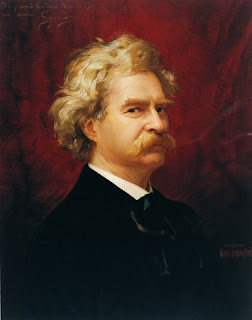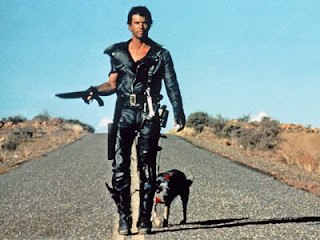The “Mutual Responsibilities” Bill—What’s Up?
Membership Matters: Fix A Flat, Grow The Alliance
- You are riding along and see a cyclist stopped on the side of the road. Perhaps the bike is upside down. (Why is it that roadside repairs for the uninitiated often involve upside down bikes?) Perhaps the rider has a sheepish “what now?” look. Perhaps there is even a gaggle of riders engaged in what appears to be a corporate team building experience centered on a surprisingly quiet bike. You offer help and get an enthusiastic acceptance. You fix a flat, boot a tire with a bar wrapper, or pull out a multi-tool, and soon they are on their way. They are thankful.
- People at your kid’s bus stop know you as “The Mom Who Rides All The Time,” and they ask you to teach their kid to ride. You work your magic in a few trips to the park, and their kid wobbles off for the first time filled with pride and excitement. Ice cream and pictures may even be involved. They are thankful.
- A casual riding buddy adopts your garage as his favorite bike shop. It is convenient and affordable! You teach him the mysteries of handlebar tape wrapping. They are thankful.
- A neighbor stops by with a kid’s bike they picked up at a garage sale. You chip in some parts and teach the kid basic maintenance as you fix it up. They are thankful.
- You pass your daughter’s outgrown bike to the next kid in line. But first, you take off the pink streamers and find a Spongebob bell. Oh, and here’s a helmet you might want too. They are thankful.
- You talk a friend through his first century. They are amazed to learn they should probably eat and drink on all-day rides. “Chamois cream” may even be dropped into the conversation. They are thankful.
Biking Investments Yield Health Care Savings
 |
| ped-bikeimages.org/LSandt |
Many of us are drawn to bicycling because it’s fun and healthy. Now there’s a study that shows a community can reduce its health care costs by investing in bicycle infrastructure. We need only look south of us to Portland.
Swiss epidemiologist Thomas Gotschi selected Portland, Oregon as the subject for his paper “Costs and Benefits of Bicycling Investments in Portland, Oregon,” published in the Journal of Physical Activity & Health. His paper provides the first cost benefit analysis of an urban bicycle network in the US. Gotschi’s analysis was made possible because of Portland’s nearly 20 years of bike investments and growth in the number of people who bike, and by the long-term data analyzing the impact of their investments.
In short, Gotschi concludes that Portland will see a savings in health care costs due to its investments in bicycle infrastructure– – possibly in excess of $500 million over 40 years.
Furthermore, Gotschi’s analysis shows that you don’t have to invest in world-class facilities to reap the benefits. Even basic investments in bicycling can lead to an increase in the number of people who bike and a decrease in health care costs over time.
Isn’t this the kind of cost efficient investment all of our communities should be making?
Recap: 11th annual National Bike Summit
Eight hundred bicycling and walking advocates gathered in the nation’s capital in early March for the 11th annual National Bike Summit hosted by the League of American Bicyclists. Our purpose: deliver the message that biking and walking are economical, efficient, and clean transportation options.
As Congress debates the future of transportation policies and programs funding levels, bicycle advocates anticipate proposals to eliminate or dramatically change the primary sources for bicycling, walking and trail programs. Representatives from Washington Bikes, Cascade Bicycle Club, the Evergreen Mountain Bike Alliance, REI, Raleigh and Bike Lid met with the Washington representatives and senators asking for support of the popular and effective Transportation Enhancements, Safe Routes to School and Recreational Trails programs.
In every office we delivered the message that even in tough economic times, we must invest in solutions that solve multiple problems like biking and walking which improve safety, health and air quality and reduce our dependence on foreign oil. The outcomes of this advocacy effort will play out over the coming weeks and months. Watch for action alerts to save these important programs.
Notable Quotes:
US Secretary of Transportation, Ray LaHood, “It’s critically important to make communities that are cycle-friendly, and it takes all 800 of you in this room to build the political leadership to create those communities.”
Congressman Earl Blumenauer (D-OR) to his fellow Congressman, “Don’t cut what you haven’t visited or experienced!”
Janette Sadik-Khan, New York City Commissioner of Transportation, “In five years, New York City has transformed itself with 250 miles of bike lanes on city streets, protected bike lanes, bus rapid transit, bike parking in buildings AND a significant decrease in traffic fatalities = the lowest in 100 years!”
Big Announcement
The National Association of City Transportation Officials unveiled its guidance for cities seeking to improve bicycle transportation in places where competing demands for the use of right of way present unique circumstances. Check it out: Urban Bikeway Design Guide.
Happy Experience
Riding the Capitol Bike Share bike to the conference. It was a big red comfort ride. It was a blast and super-easy to use. I highly recommend it.
Inaugural award
University of Washington won a League of American Bicyclists inaugural bicycle friendly university silver award.
Hub & Spoke: next up Mount Vernon
The Bicycle Alliance is hitting the road again with its Hub and Spoke tour. This Thursday we will be in Mt. Vernon and we’re inviting area cyclists to meet up with us for some networking and discussion of bicycle issues. We’ll have an update on our legislative priorities and current projects, including our work on the US Bicycle Route System (USBRS) in Washington State. Please join us!
Let’s Lawyer Up!
 |
| The Missing Link (Seattle Times photo) |
But things could be worse.
 |
| S.F. Mayor Gavin Newsom prepares to paint a long-awaited bike lane (The Bay Citizen, San Francisco) |
|
The Prospect Park West cycle track (Park Slope Neighbors website)
Litigation notwithstanding, the new cycle track enjoys the support of 70 percent of the neighborhood’s residents and about half of those who live along the affected street. And according to the Times, a spokesman for the New York transportation department noted that since the track was installed “speeding is down dramatically, crashes are down, injuries are down, and bike ridership has doubled on weekends and tripled on weekdays.”
|
The mere fact that bike-facility opponents are motivated to litigate shows the depth of opposition that remains toward cycling in America. Baffling as it may be to regular cyclists, some part of the American public seems to perceive bicycling as a threatening proposition, bad for business and for transportation. There seems to be a widespread belief that the roads belong exclusively to cars, and that urban transport is a “zero-sum” game: if the cyclists “win,” then cars “lose.” It’s not that way, of course. Adding bicycles to the transportation mix can actually help decrease traffic congestion and increase overall mobility, as the experience of Copenhagen has demonstrated.
Poster Contest for Fifth Graders: Bicycling is fun…and healthy too!
Calling all 5th graders!
The Bicycle Alliance is serving as the Washington State lead for a national poster contest for fifth graders. The objective is to ask the students to create a poster that reveals his or her understanding of the significant purpose bicycling can play in their community. We want the posters to show the students’ enthusiasm for why bicycling is fun, healthy and green!
Legislative Update: Where are we now?
Here’s a quick rundown on the bills that Washington Bikes is working on:
Our Traffic School bill passed out of the Senate Transportation Committee yesterday! It now moves to the Rules Committee.
The 20 mph bill had a hearing yesterday. Policy Director Dave Janis testified before the Senate Transportation Committee in favor of it. Washington State DOT raised concerns over an attached amendment that would allow cities and towns of fewer than 3000 to decrease the maximum speed limit on state highways within their jurisdiction. Watch the hearing on TVW:
The House and the Senate have passed slightly different versions of the Vulnerable User bill. Today the Senate Judiciary Committee will hold a hearing to consider the house version of the bill.
The Complete Streets bill received a hearing before the Senate Transportation Committee last week. Bike Alliance board member Bob Duffy testified in favor.
Also of note: SSB 5191, which would have repealed the requirement to include bicycle and pedestrian safety in driver’s education (among other things) died on the Senate floor.
We used Bike Expo has an opportunity to make the cycling public aware of our legislative priorities and we collected nearly 400 signatures in support of the Traffic School and 20 mph bills. Thanks to all who dropped by our booth and signed the petitions.
Be sure to check our Legislative Page for additional information on our priorities.
Dexter Avenue: Waiting for a Monolith Moment
On the other hand, if transportation planners want to increase cycling to a level where it actually makes a dent in our urban transportation problems, they have to stop thinking solely of the present cycling community as their “customer base” and focus more on those who don’t commute or run errands by bike, but just might be convinced to do so if the bicycle felt like a safe and convenient alternative to their car. In simple terms, take the focus off the guy on the $2,000 touring bike and place it on the mom with the kid’s seat on the back of her old cross bike. That means not only building first-class (mostly separated) bike facilities, but also making sure that cycling isn’t effectively foreclosed as an option during construction projects.
 |
| Temporary bike path in Copenhagen (Copenhagenize.com) |
That’s also why those countries virtually always provide for cyclists during road construction. Temporary cycling paths are built so that travel patterns aren’t disrupted. Sometimes engineers will even close part of a highway to cars and convert it to a cycle path during a road project, or may even build a temporary freeway crossing for cyclists, as shown in the videos and links on this post by European bike blogger David Hembrow.
Bike Expo is this weekend
Bike Expo. the Puget Sound event organized by Cascade Bicycle Club that features all things bicycle, is happening this weekend. Be sure to drop by the Bicycle Alliance booth and high five our wonderful volunteers if you’re going to the show.
We’ll be handing out bike maps, our latest newsletter with our 2011 Rides Calendar (thanks, Bicycle Paper!), Share the Road materials, and more. We’ll have updated information on ou legislative priorities too. We’re also doing the popular Share the Road jersey raffle.
There’s lots to see and do at Bike Expo – check the show schedule for specifics.










